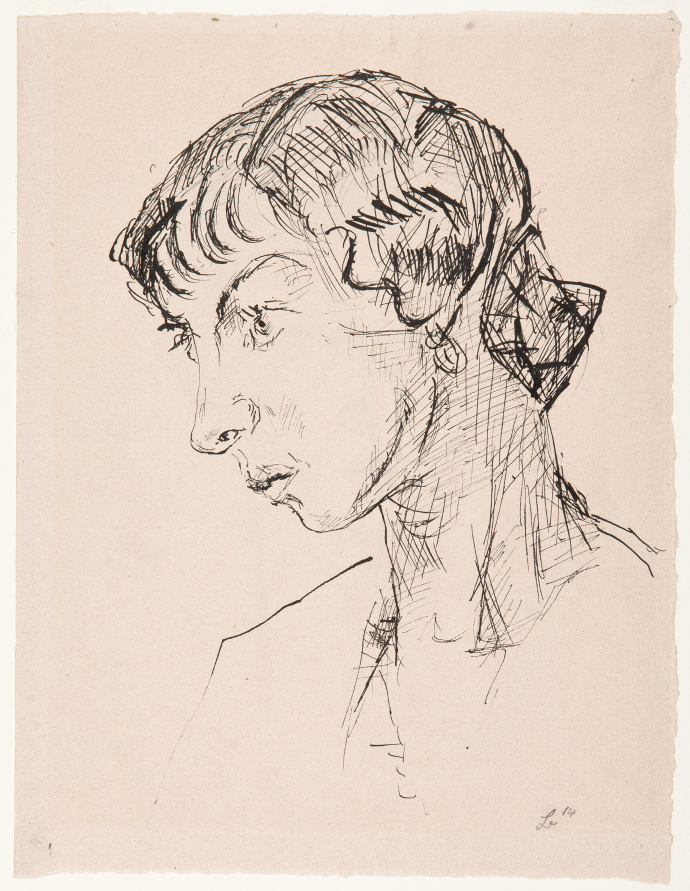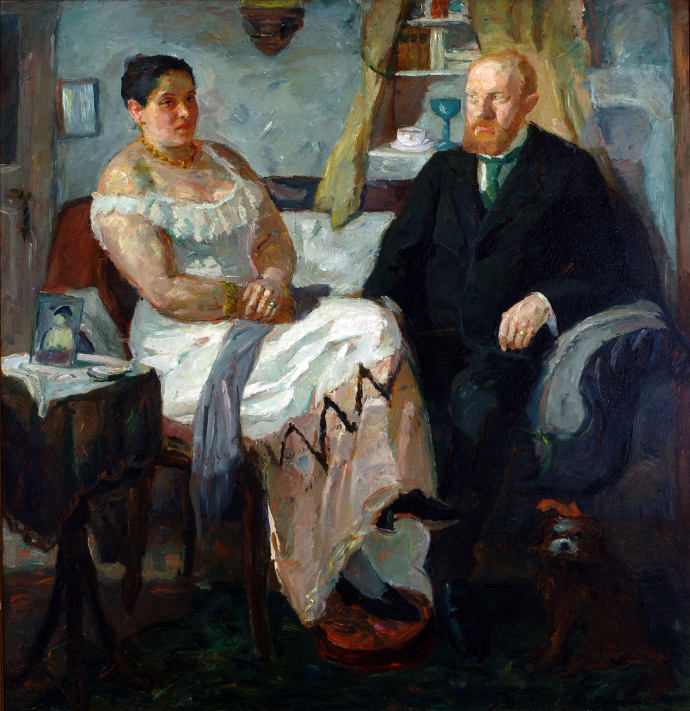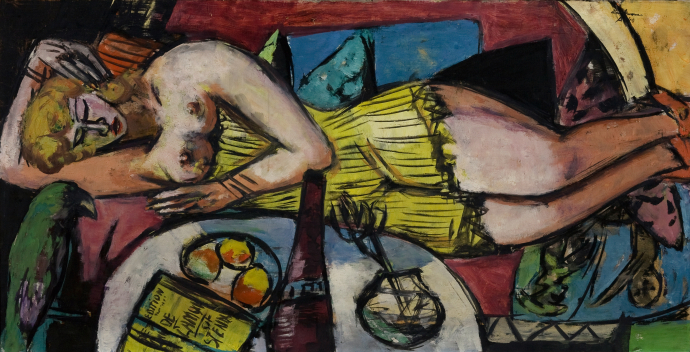
Intro
»Carnival« combines three motifs that appear throughout Max Beckmann’s oeuvre: the self portrait, the double portrait, and the carnival. Beckmann’s second wife, Mathilde von Kaulbach, whom he lovingly named “Quappi” and painted hundreds of times, is depicted as an attractive dancer on the right side of the picture. She sits self-confidently with crossed legs, attentively observing something which lies outside our field of vision. The artist’s alter ego, who also appears in the guise of a clown or a fool in other portraits, is shown behind her performing an act of acrobatic contortion, his face concealed by a cloth. Yet despite his stunt, he is still unable to attract his partner’s attention.
Beckmann married Mathilde in September 1925. She appeared in »Carnival« the same year—the first time she featured in one of Beckmann’s paintings—and became a component of his world theatre, which plays with a diversity of costumes, social roles, and religious or mythological symbols. But Beckmann’s painting also shows us two ways of encountering the world. While the fool shuts himself off and can only observe his surroundings through a narrow slit, Quappi self-confidently engages with reality.
Kunsthalle Mannheim / Kathrin Schwab
)

![Bildnis der Tänzerin Sent M´Ahesa Signatur: im Stein o.re.: "20.4.21 bei Weidner // von Beckmann", u.mi. in Bleistift: "Beckmann": Beschriftung recto: u.mi. in Bleistift: "Probedruck": Beschriftung verso: o.li.: "1661 [alte Inv.nr.]"; u.li.: "N841"](/sites/default/files/styles/700_breit/public/digitalisate/G1573_MOS_2018.jpg?itok=rEdbYKTq)



